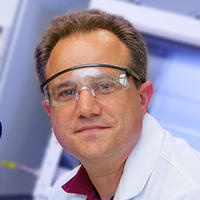Apr 17 2015
Thomas Albrecht-Schmitt, a Professor of Chemistry at Florida State University, has discovered that californium is a transitional element that enables the linking of one part of the Periodic Table of Elements to the next.
 Professor Thomas Albrecht-Schmitt
Professor Thomas Albrecht-Schmitt
Californium is among the little-known elements. This discovery at Florida State University is changing the manner in which scientists are studying the periodic table.
Very little is known about the elements at the end of the periodic table. They are among the heaviest chemical elements existing on Earth. More information about these elements would be very useful in applications such as attempting to recycle or store nuclear fuel. Hence, knowing the capabilities of californium would prove to be advantageous.
In this study, Professor Albrecht-Schmitt has found that californium linked one part of the periodic table to the next. On the periodic table, californium is located after americium, curium and berkelium, and is followed by einsteinium, fermium and mendelevium. Californium has properties that are in the three elements before and after it, and hence has unique capabilities that make it a prime target for advanced studies.
“This really changes how we think about the periodic table,” Albrecht-Schmitt said. “It’s important because we understand very little about these heavy elements. Governments and universities invest a lot of resources — financial, time and intellectual — into learning more about these elements.”
Albrecht-Schmitt faced a very tough task in his attempts to acquire californium. He successfully managed to obtain 5 mg of californium after negotiating with the U.S. Department of Energy for many years. This was through an endowment in honor of retired Professor Gregory Choppin of the Florida State University.
Multiple experiments have been performed on these 5 mg of californium. Studies in 2014 led to the discovery of the ability of californium to bond with other materials, and also to separate them. These studies took place over a period of two years.
The Oak Ridge National Laboratory (ORNL) had provided the californium for this study. Scientists and theorists from the Florida State-based National High Magnet Field Laboratory and ORNL had collaborated in this study. The experiments involved were conducted at Florida State. The Argonne National Laboratory and the University of Alabama also contributed to this research.
This study has been published as a paper in Nature Communications journal.